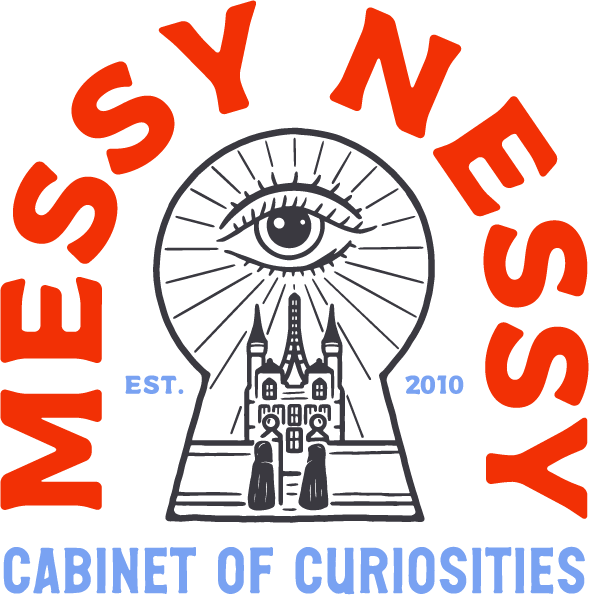A PIT-STOP IN JAPAN’S TIME CAPSULE POST TOWNS (between Tokyo and Kyoto)

Wander through Japan’s post towns, or Shukuba, charming Edo-period pit stops along the Nakasendo, a 500+ km highway between Tokyo and Kyoto once frequented by samurai and nobles. Nicknamed “The Princess’s Superhighway”, it had 69 post towns, offering inns, food, and trade.
These towns thrived for centuries, hosting figures like Princess Kazunomiya, who traveled with an entourage of 15,000, fueling local economies. Honjin inns housed VIP officials, while minshuku and Waki-honjin welcomed travelers of all ranks. Many of these traditional inns are now house museums.
By the 1960s, most post towns had crumbled, but government restoration preserved their thatched roofs, wooden homes, and car-free streets, creating time-capsule villages where you might expect to see a ninja on the rooftops.
For an off-the-beaten-path experience, visit Tsumago, Magome, Narai, and Ouchijuku. Tsumago boasts a 500-year-old cherry tree and Nagiso Museum, while Magome’s hilltop views have inspired artists for centuries. A scenic hike between Magome and Tsumago offers a glimpse into Japan’s past, no athleticism required.
Stay in Narai’s Minshuku Shimada for under $100/night, then explore more of the Kiso Valley’s historic towns—a must for seasoned travelers.
KANAZAWA (near Kyoto)

In addition to Tokyo and Kyoto, consider one night in Kanazawa – it has incredible gardens and sights and it’s the city of artisans. Founded by the Japanese version of the Medici (the Maeda family – very distant relations!) who sponsored artisans and the arts to distract the Shogun from the fact that they were also funding a huge army. One of Japan’s top 3 gardens (Kenrokuen), lovely geisha district, numerous preserved samurai houses.
The surrounding countryside is also lovely and features a number of villages that are UNESCO heritage sites and on many peoples’ bucket lists. Eat at the most delicious food stands at the Omicho Market, before touring the homes and gardens of its beautiful old Samurai neighborhood.
Then on to the Noto Peninsula, which feels like the Cape Cod of Japan with its seaside tourist towns and fishing villages. Find the most perfectly serene ryokan, Yuyado Sakamoto, run by a mother and daughter who farmed their food on the land, which they then slow-cooked for days before serving it over leisurely eight-course, post-soak meals. From there, head to the mountain town of Shibu Onsen, outside of Nagano city, where the local hotels give you a robe, wooden sandals, and a special key to unlock nine different little bathhouses scattered about the town, each with its own special hot springs meant to treat different ailments.
Bath Houses
You’re probably familiar with the favourite Roman pastime of nude public bathing, but did you know that it’s an even bigger phenomenon in Japan? Getting hot and steamy is deeply rooted in Japanese culture, and public baths are still as popular as ever. The archipelago, which consists of over 6, 800 islands,
is home to over 30, 000 baths, so wherever you go you’ll be sure to find one.
Let’s start with the basics. Japanese baths are called “onsens”. Although you can find them indoors, most of them are outdoors where you can be at one with nature. The water is geothermally heated, so it’s no surprise that the name onsen literally translates to “warm spring.” Just like the Roman baths, Onsens are hot spots for socialising with friends. The different natural minerals in the water mean that they have healing properties too – they can be good for your skin, heart, immune system and more. Intrigued?
The abundance of onsens is directly related to the geography of Japan, because it’s one of the most volcanically active countries in the world– which means it has a lot of natural hot springs. It’s home to about 10% of the world’s active volcanoes and not far from the largest volcano on the planet, which lies
in the Pacific Ocean.
From the onsen culture also emerged the sentō, which aren’t hot springs because the water is heated as you would heat your bath at home, but they’re pretty much the deal otherwise. All public baths have specific rules that you have to follow, some of which may surprise you. And to make life easier, we’ve
put together a short guide so that you can steam up in peace.
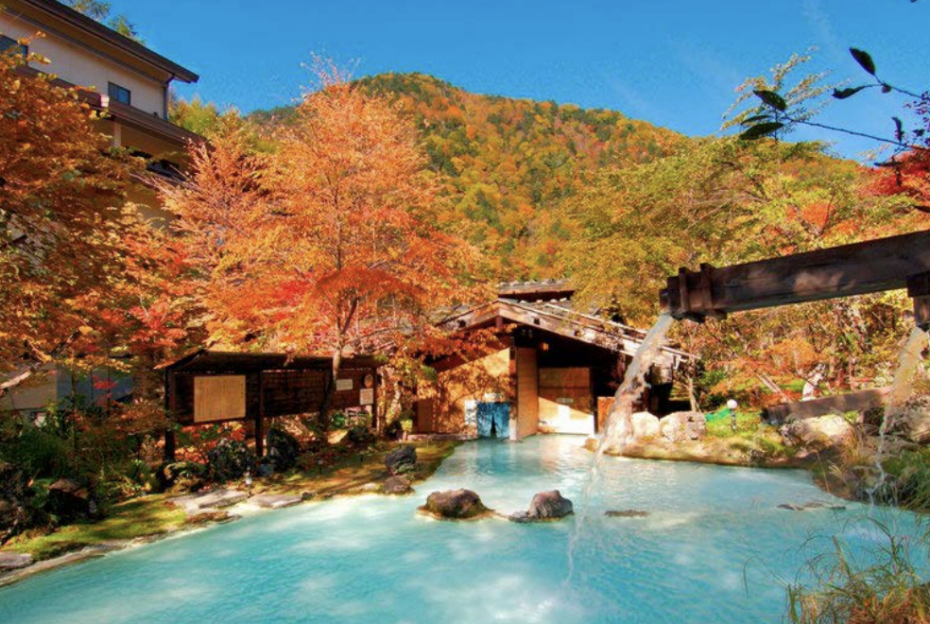
- Historical Onsens in the Mountains: Tucked away in the Japanese Alps, you’ll find a bygone village esteemed for its wonderful hot springs. The Shirahone Hot Springs are known for their milky waters, and legend has it that if you soak in them for three days, you won’t catch a cold for three long years. Most baths in the area are in hotels where you can pay a small fee to enter, and Awanoyu is perhaps the most well known, where there’s a large, gender mixed, outdoor spa nestled in the woods. If you feel more comfortable being in a separate women or men only bath, there are separate baths indoors too. You can make it a day trip destination, but of course you can also stay the night at one of the ryokans and try more than one. We recommend going in the warmer months as many things are closed during winter. (The springs can be reached from Tokyo by taking the train to Matsumoto, from where you must take the Matsumoto Electric Railway to Shin-Shimashima Station, and finally the Alpico bus to Shirahone Onsen)
- The Arty Bathhouse – Naoshima: Located in the Seto inland sea, Naoshima is an island dedicated entirely to art. It’s famous for its spiritual architecture (designed by the likes of Tadao Ando) and rich artworks. Here you can find Yayoi Kusama’s famous spotty pumpkin, Monet’s Water Lilies, and a recreation of his garden. Why go to Giverny when you can go to Japan? (P.S. If you can’t get a room on the island, you can also stay in Okayama where you can easily get the train and ferry to the island). At the heart of its community lies the Naoshima bath house designed by Japanese artist, Shinro Ohtake. Even from the outside you can see that it stands out, with the brightly coloured tiles and columns, palm trees, and neon lights. There is even a globe sticking out at the top like an antenna. Inside, there’s a retro collage on the bottom of the bath which you can get lost in, there’s a giant elephant on top of the showers, and even the toilet seats are art pieces. (Naoshima can be reached from Okoyama, where you can take the JR Uno Line to Uno Station, then take the ferry and get to Naoshima by getting off at Miyanoura Port or Honmura Port).
- The Onsen at the World’s Oldest Hotel: Nishiyama Onsen Keiunkan owns the monumental title of world’s oldest hotel – with the Guinness World Record to prove it. You can find it in a secluded valley at the bottom of the South Japanese Alps, not far from Mount Fuji. It was established in 705AD and has been passed down 52 generations and its antiquity has resulted in rumours that it’s haunted.
- In the traditional Japanese inn, or roykan, you’ll find woven-straw flooring, futon beds, and decadent meals. It might be old, but that doesn’t mean that it’s lost its touch. Here, you can choose from 6 different onsens with some pretty wonderful views of the mountains– 4 outside and 2 inside. The hotel website notes that their springs specifically help gastrointestinal disorders, muscle pain, constipation, and fair skin?! Oh, and P.S. You might want to book the karaoke room for once you’ve finished in the onsen. More info on how to get there here.
Satisfying your flower fetish
Urashima flower park is one of the most scenic flower fields in Japan. Planted by local school children, the park is filled with different coloured marguerites and marigolds, with a backdrop of the Sento sea and the neighbouring islands. Photographers flock to catch pictures of the sunrise. (528-1 Takumachotsumu, Mitoyo, Kagawa, 769-1104)
Covering 350 hectares, Hitachi Seaside Park is lauded for its glorious flower fields which overlook the ocean. In spring, the Miharashi Hill becomes an uncomparable blanket of blue, covered in millions of nemophila, while in autumn, it’s home to the rusty kochia bushes. Whatever season you stop by,
there’s always a cornucopia of flowers, including daffodils, roses, tulips, sunflowers, and more. The park can be explored via walking trails, by bike (which can be hired for around 450 yen per 3 hour stretch), or even by a train which can drop you off at different points. There’s also a ferris wheel and a barbeque
area to stop at which is perfect for picnics. (〒312-0012 Ibaraki, Hitachinaka, Mawatari, 字大沼605-4; about a 2 hour drive from Tokyo)
Japanese Mermaids (seaside)
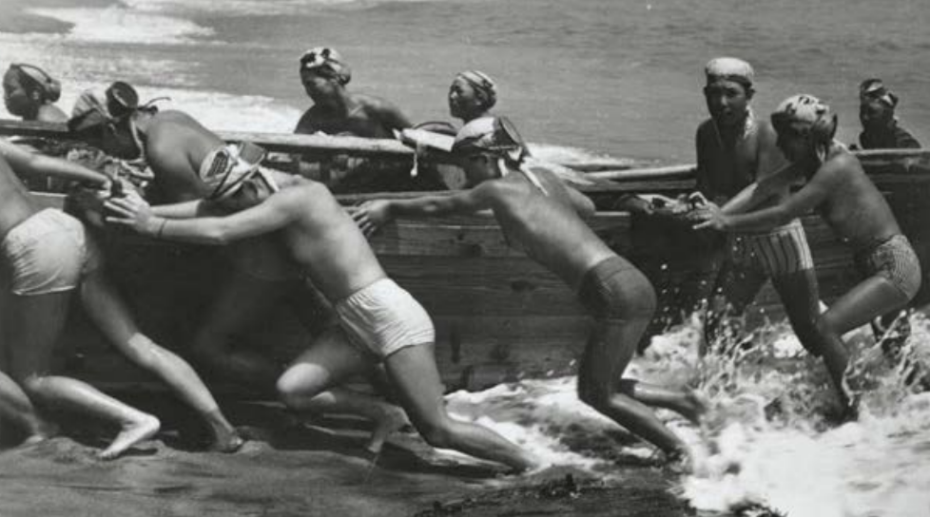
For nearly two thousand years, Japanese women living in coastal fishing villages made a remarkable livelihood hunting the ocean for oysters and abalone, a sea snail that produces pearls. They are known as Ama, and there remain a number of ladies left in Japan who still make their living (well into their 90s) by filling their lungs with air and diving for long periods of time deep into the Pacific ocean with nothing more than a mask and flippers.
In the mid 20th century, the young women, some just girls, would dive in often freezing waters for 2 minutes at a time and come up to breathe for just barely a few seconds. They would do this up to 60 times in a single diving session, up to three times a day. As women, they were believed to be better suited for the task because of an extra insulating layer of fat on the female body that allows them to hold their breath for longer than men. With this advantage the could also make more money in a single diving season than most of the me in their village would make in a year.
Most Ama took to diving in nothing more than a tiny loincloth and mask. But after the Second World War, as tourism in Japan grew, outsiders began to comment on their nakedness and Ama divers were eventually forced to cover-up in a white diving costume. Faced with the opportunity of motherhood and legal issues around fishing licenses stating that fishing must stay within particular communities, the Ama women are having to decide whether to keep working or to start a family. Modern life poses a predicament for the rare number of Ama women left, and soon we will only be able to tell the story of
these women and their admirable capabilities and courage. If you’d like to get to know the last Ama divers, the Mie Prefecture is the place to be, but you can give them a visit in numerous other coastal spots in Japan too.
From Osaka, Kyoto, or Nagoya, limited express trains provide convenient connections.
URBAN EXPLORATION
Explore the abandoned Hashima Island: (in the north, near Nagasaki)
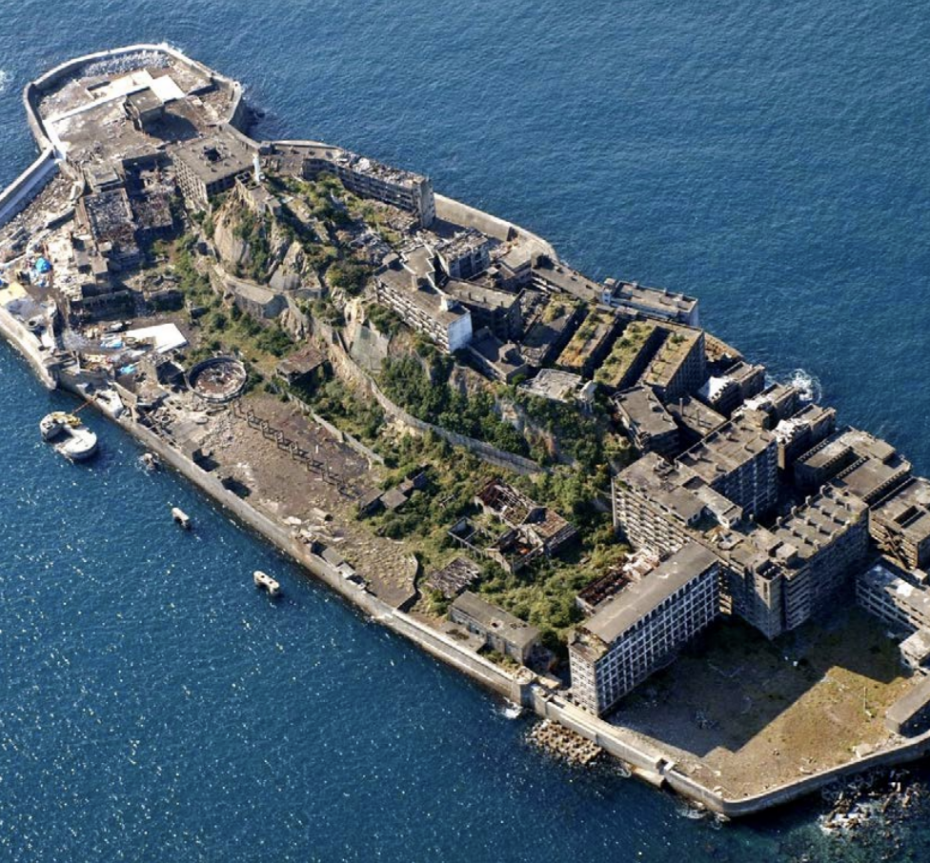
Hashima Island—also known as Gunkanjima (“Battleship Island”)—is a decayed, uninhabitable ghost town in the middle of the sea, once the densest place on Earth. Featured in Skyfall as Raoul Silva’s lair, its eerie ruins make for a perfect villain’s hideout.
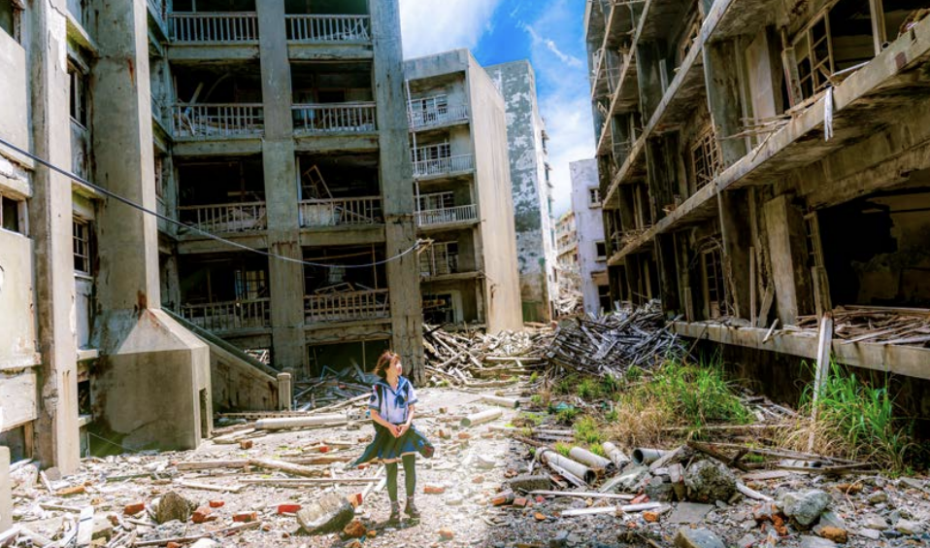
Originally a Mitsubishi-owned coal mining hub, Hashima thrived from 1887 to 1974, housing over 5,000 workers in prison-like, high-rise conditions. During WWII, Korean and Chinese prisoners were forcibly sent to mine coal, working 600 meters underground in brutal conditions. By the 1960s, as Japan switched to petroleum, Hashima declined, and in 1974, Mitsubishi abandoned the island overnight.
Now, Hashima is a haunting relic of industrialization, with crumbling concrete buildings overtaken by nature. Once off-limits, it’s now open to guided tours, though unstable ruins and rough waters can lead to cancellations. While physically demanding, the journey is a unique, cinematic adventure—well worth the effort.
If you want to experience the island, but are looking for an alternative to the boat ride, the Gunkanjima Digital Museum is full of interesting artefacts and information about the island, and you can imagine yourself on the island using VR gadgets. You can also do both, by getting a combined ticket for the boat
trip and the museum with one of the tour companies.
For more information on how to get there and a bit more about the boat tours, you can find it here.
An Abandoned American Cowboy-themed park (near Tokyo)
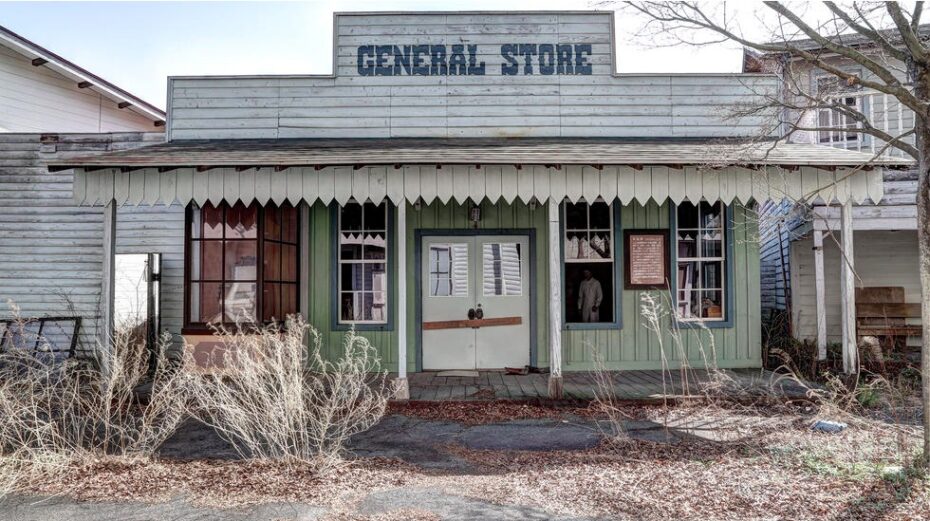
The Western Village is a derelict and rotting American colonial theme park. that closed its doors forever in 2007 after failing to compete with Tokyo Disneyland. If you’re intrigued by the sound of a remote and eerie American ghost. town in Japan, this place is for you…
Built in 1979, seventy miles north of Toyko, Western Village includes a cowboy saloon, a jail, a post office, a shooting gallery, a fake Rio Grande, and vast. Mexican barrens. Oh, and a 1/3 scale replica of Mount Rushmore that was added in 1995 which allegedly cost the park $27 million to build. It may come as no surprise that Western Village later filed for bankruptcy.
(In August 2019, Google maintained the site was still there, use these co-ordinates as a guide and keep an eye on it as these abandoned sites are always at risk of being taken over by new developers)
Full article here.
Did Jesus Escape to Japan? (find out north of Tokyo)
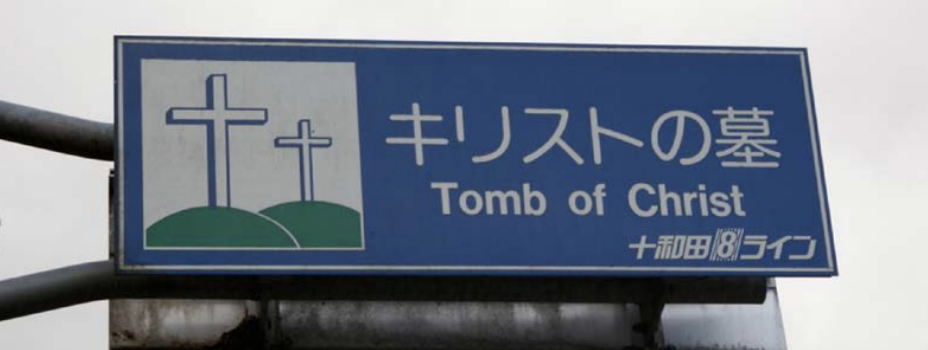
Shingo is a rural village, 650km north of Tokyo that is believed by its inhabitants to be the last resting place of Jesus Christ. Make the pilgrimage to its quiet hills, and you’ll find yourself in a veritable slice of the Twilight Zone where the Christian prophet is said to have led a double life as a garlic farmer, had three daughters, and lived out his days there until the age of 106 – all details that are fully explained at the local Jesus Museum.
In Shingo Christ is believed to be “a great man”, but not necessarily a performer of miracles. Instead, he adopted the name Torai Taro Daitenku and started a family with a woman named Miyuko. The direct descendants of that bloodline today belong to the Sawaguchi family, who have looked after the burial plot ever since and refuse to dig it up to either confirm or debunk the legend.
There’s a museum by the burial plots that provides information and evidence of the village’s claim to fame. The prevailing legend of expat Jesus, however, brings a degree of tourism and vitality to the region. Every June, people gather to celebrate with a big old picnic by the burial mounds singing Hebrew-Japanese folks songs. It’s all a part of the “Bon Festival”.
Is there any, even the tiniest sliver of truth to the legend? There is an “unaccounted for” 12-year gap in the New Testament. At one point, there was supposedly a real biblical relic to back-up the story, the Takeuchi Scrolls, which surfaced in the 1930s but disappeared in WWII. The “Christ Museum” in Shingo now has transcriptions of the lost documents that only the oldest locals remember.
Find out more about Jesus’s Japanese double life here and have a look around Christ’s Japanese grave site here. (Nozuki-33-1 Herai, Shingo, Sannohe District, Aomori 039-1801)

